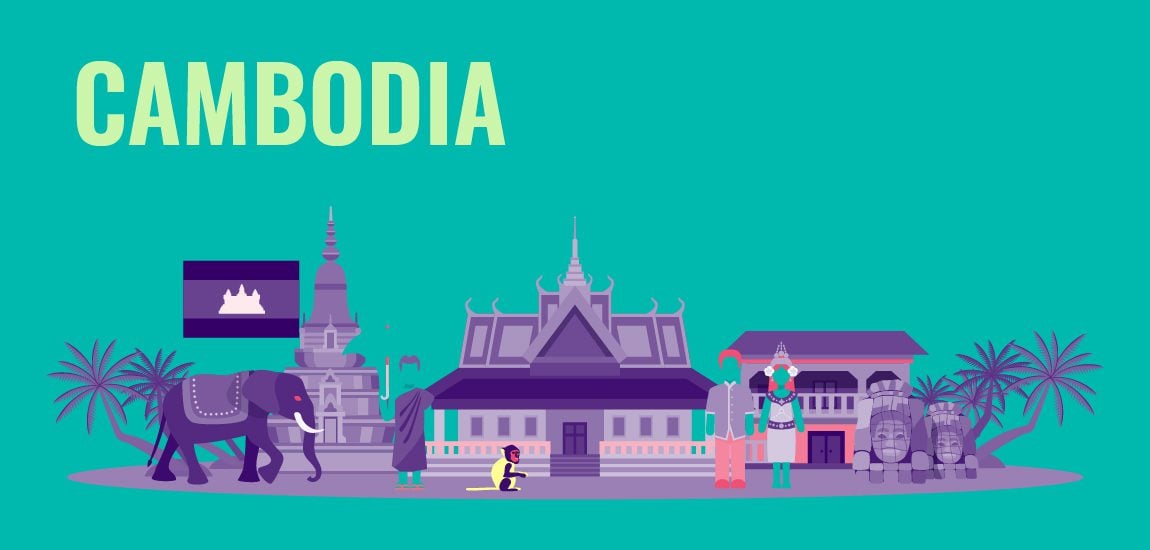
Languages Spoken in Cambodia : A Comprehensive Guide
Languages Spoken in Cambodia
Cambodia has four official languages: Khmer, English, French, and Vietnamese. The first three are Southeast Asian languages in the Mon-Khmer family. Khmer is spoken by 96% of the population and is mainly spoken in Cambodia’s central and southern regions. English is spoken by 89% of the population and can be found in both urban and rural areas, mostly taught in schools and used as a common language between the various ethnic groups. The French language was commonly spoken during colonization but was replaced by English after Cambodia’s independence from France in 1953.
The official language of Cambodia is Khmer, but it’s not the only language spoken in the country. In fact, over 130 different languages are spoken across the entire country by its more than 15 million residents. It’s not hard to see why many people who live in Cambodia speak more than one language—you can find English, French, and Chinese speakers living alongside Khmer speakers in some areas of the country, not to mention the various ethnic groups that speak their native languages. The official language of Cambodia is Khmer, but it’s not the only language spoken in the country.
Introduction to Cambodian Language
The Cambodian language, also known as Khmer, is the national language of Cambodia. It is a member of the Mon-Khmer language family, which includes languages spoken throughout Southeast Asia.
Khmer is the dominant language in Cambodia, spoken by approximately 95% of the population. However, there are also minority languages spoken in Cambodia, including Vietnamese (1%), Chinese (0.5%), and other foreign languages (3%).
The Khmer Rouge regime (1975-1979) was responsible for a sharp decline in the use of Khmer, as well as other minority languages, but since the fall of the regime, there has been a resurgence in the use of Khmer as the national language.
The various dialects of Khmer have some vocabulary, pronunciation, and grammar differences. Northern Khmer dialects are centered around the provinces of Kratie and Stung Treng; Central Khmer dialects are spoken around Kampong Cham province; Southeast Asian dialects include mainly Western dialects from Battambang Province; Ratanakiri Province uses Eastern dialects.
Different dialects are not mutually intelligible, so Khmer people living in different regions often speak different language varieties. There are four main groups of Khmer: Middle Khmer, West Central or Kracheh or Khmal, Southern or Kraol or Eastern, and North Eastern or Malayo-Polynesian.
The standard form of the modern vernacular form of the spoken language is called National Language Standard Khmer (NLK). NLK follows a slightly modified version of colloquial writing that draws on both regional forms. It is currently taught in schools and universities.
A Romanized script for Khmer (Chomrung) was devised in 1979 with help from Yale University Press, Westview Press, and South East Asia Studies scholars.
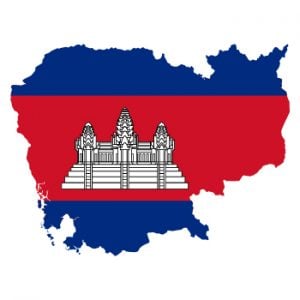
Phrasebook for Cambodia
There are two official languages in Cambodia: Khmer and English. However, Khmer is the natural language spoken by most of the population. French, Vietnamese, and Chinese are also widely spoken languages in Cambodia. Khmer is a very diverse language with many different dialects, but they can all easily be understood.
Khmer script uses 33 consonants and 18 vowels. Vietnamese has a complicated writing system with six tones that represent the four syllables of Mandarin and a word’s meaning; the Vietnamese script contains 28 letters (consisting of 14 consonants and 14 vowels). It takes twice as long for someone who does not know Vietnamese to read Vietnamese than it does for them to read English because it is a tonal language.
Vietnamese has a rich history and provides an important cultural legacy to other countries, especially since no standard Vietnamese language exists. With this in mind, most people use the Hanoi-based Quoc Ngu instead of Cholon-based Chua Bat Ngoai or North Vietnam-based Giao Tieng because it is easier to learn and less complex. For those who want to speak like a native speaker, Standard Vietnamese is used more often than any other form.
Differences Between Khmer & Vietnamese
Despite their proximity, Khmer and Vietnamese are two very different languages. For starters, Khmer is a tonal language, meaning that a word’s meaning can change based on the tone it’s spoken with. Vietnamese is not a tonal language. Additionally, Khmer has its unique alphabet, while Vietnamese uses the Latin alphabet.
The most notable difference between these two languages is that Khmer lacks an equivalent for the letter F and uses combinations of letters like Khk-hngg or Khn-ngnh instead of English words like a finger. A few examples of this include khkaang (fish), khkoeng (to die), and khlikh (night). One way to distinguish between the two scripts is by looking at vowel symbols. In Khmer script, vowels have a dot beneath them; in Vietnamese script, they do not.
Differences Between Khmer & Lao: Khmer shares many similarities with Lao, a closely related language spoken primarily in Laos. Some of these similarities include writing systems and tones.
However, there are also many differences, including vocabulary and grammar usage. Continuation (six+ sentences): Similarities Between Khmer & French: Like any other foreign language learner might experience when learning about Cambodian culture, there are many things that we didn’t know about our day-to-day interactions until we began researching the topic more thoroughly. We found out through our research that there are some similarities between French and Khmer, too!
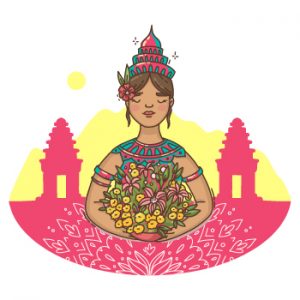
The Official Language of Cambodia
There are a few ways to learn Khmer, including online audio dictionaries and strings of verbs conjugated with a single auxiliary verb meaning to be. Comparative dictionary complete language African Language Library University of London University of Hawai’i Press University of Hawai’i at Manoa Payap University Cornell University Catholic University Press
University of Hawaii Press University of California Thammasat University Mahidol University University of Chicago Australian National University National Taiwan University Institute for the Advanced Study University of Illinois Thai: Thailand’s official language is Thai.
The second most common languages spoken in Thailand include Burmese, Lao, English, Chinese (Cantonese and Mandarin), Hokkien (a type of Minnan), Hmong, and Indian languages such as Tamil (India) and Punjabi (Pakistan). It is important to note that these languages can vary depending on where you are in Thailand.
The Next Largest Language Group in Cambodia
According to the University of Hawai’i Press, Cambodia is a country of linguistic diversity. While Khmer is the primary language Cambodians speak, several other languages exist. The next largest language group is Vietnamese, followed by Chinese.
Other languages spoken in Cambodia include Lao, Thai, and English. One-third of the population speaks one or more of these languages. Many people have migrated from neighboring countries like Vietnam, Laos, Thailand, and China within the last few decades. These people may speak their native tongue as well as Khmer (Cambodian).
As a result, it’s been difficult for linguists to count how many languages are spoken in Cambodia. Some estimates put the number at nearly 100, while others say that around 150 languages are used nationwide. One major issue has been distinguishing which language someone speaks when they don’t know how to write out their answer.
In addition, when two or more cultures meet in this multicultural setting, they each bring a different vocabulary and syntax. Linguists must take into account that these groups communicate with each other through a combination of both of their native tongues as well as Khmer (Cambodian)
How Many People Speak Foreign Languages?
According to a recent study by the University of Hawai’i Press, a majority of Cambodians speak Khmer. However, there are several other languages spoken in the country, including Vietnamese, Chinese, and French. The percentage of people who use one or more foreign languages at home ranges from 25% in Kampong Cham Province to 97% in Siem Reap Province. Most people in Cambodia, however, have not mastered any language besides their native tongue. The Ministry of Education has attempted to put an end to this problem by adding English as a second language for primary schools. Some linguists believe that developing fluency in English will make it easier for Cambodian students to find jobs outside of the country. Still, there is concern about how teaching kids a new language will affect them socially and academically. For example, many parents worry that kids might grow up feeling inferior because they can’t speak Khmer with their family members like they used to.
Why You Should Learn One of the Languages Spoken in Cambodia
Cambodia, one of the largest countries in Southeast Asia, has several official languages, including Khmer (Cambodian), English, French, and Chinese. However, there are several other languages spoken in Cambodia as well; since English isn’t widely used outside of the country’s big cities, here are some of the native languages you might run into when traveling through Cambodia, along with tips on how to learn them and whether it’s worth your time to do so.
10 Things To Know About Learning A New Language
Learning a new language can be a daunting task, but it can also be immensely rewarding. Here are 10 things to keep in mind when learning a new language:
1. Don’t expect to become fluent overnight. It takes time and practice to learn a new language.
2. Find a method that works for you. Some people learn best by listening to audio recordings, others by reading texts, and others through immersion in the language.
3. Practice, practice, practice. A good way to practice is to find a native speaker of the language you’re learning and have conversations with them regularly.
4. Make mistakes! You will inevitably make mistakes when learning a new language, but don’t let that discourage you.
Read this blog post to learn about the top 10 languages with the most economic benefits.
Study your weaknesses first
Do you want to learn a new language? If you’re considering learning Cambodian, you might wonder what its writing system is like and how difficult it would be to learn. While the Cambodian alphabet may look daunting at first, with a little effort, it’s not as hard as it seems. Once you know the basics of the script, you’ll be able to read and write Cambodian quite easily.
For example, here are some of the letters: A-N-E-Y. The letter ‘A’ is pronounced like ah or eh (it doesn’t matter which one), ‘N’ sounds more like ng but isn’t nasalized (like when you say sing), ‘E’ sounds like eh, and ‘Y’ has two pronunciations: It can sound like an English Y sound (think of saying yes) or more of a French J sound (think of saying je). I hope this blog post has helped!
Start with something easy
Cambodia is a country located in Southeast Asia. The official name of the country is the Kingdom of Cambodia. The population of Cambodia is over 16 million people, and the capital city is Phnom Penh.
The primary language spoken in Cambodia is Khmer, also the country’s official language. Khmer is a member of the Austroasiatic language family, closely related to Vietnamese and Lao. Cambodian Khmer has four dialects: Northern Khmer, Northwestern Khmer, Central Khmer, and Southern Khmer.
In addition to Khmer, there are several other languages spoken in Cambodia. These include English, French, Arabic, and Thai. English is taught as an additional language at many schools in Cambodia, especially those in the private sector. French was historically used as an administrative and educational language before independence from France.
After World War II, many Japanese soldiers were stationed in Cambodia; they taught their children Japanese at their homes but not in school or government offices because of fear of reprisals from the occupying British forces.
The literacy rate for adults over 15 was about 78% as of 2009. The literacy rate for men was 82%, while for women was 74%.
Record yourself speaking
The Khmer language is spoken by around 16 million people in Cambodia. It is also spoken in parts of Vietnam, Thailand and Laos. Khmer is a member of the Austroasiatic language family, which includes languages such as Vietnamese, Mon and Khmer. Khmer has been influenced by Sanskrit and Pali, two of the major languages of ancient India.
The Cambodian alphabet consists of 33 consonants and 12 vowels. Khmer words are usually made up of a root word plus one or more suffixes or particles. There are four tones in Khmer: high, mid, low and falling.Khmer has two main registers: formal and colloquial. A 2007 estimate found that 76% of Cambodians speak Khmer as their first language, 20% speak other languages and 4% have no knowledge of any language at all.
These numbers are likely to be higher today. In Cambodia, there is no sharp boundary between Khmer (the official state language) and Cambodian (a less-standardized vernacular form of Khmer). Informal use of Cambodian often implies some level of understanding of standard Khmer.
After 74 years under French rule, Cambodia regained its independence on November 9th, 1953.
Practice, practice, practice!
If you want to learn one of the languages spoken in Cambodia, there are a few things you should know. First, Khmer is a tonal language, which means that the meaning of a word can change based on the pitch it is spoken with. There are also a lot of vowel sounds and consonant clusters, so it can be difficult for English speakers to pronounce words correctly.
However, practice makes perfect! There are also a few different dialects of Khmer, so you might want to learn more than one if you plan on traveling around the country. The main differences are between Northeastern (Bantei) and Southern (Khmer of Phnom Penh). A Southern Khmer speaker may have trouble understanding a Northeastern speaker, but they will both understand Central Khmer.
Another important distinction is between colloquial speech and polite speech: these are two completely different registers of the same language. Colloquial speech would sound much less formal than polite speech, making it appropriate for casual conversations or even cursing at someone who cuts you off in traffic!
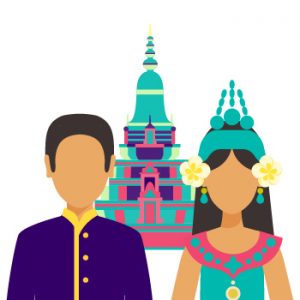
Join a class
If you want to learn one of the languages spoken in Cambodia, a few options are available. You could join a class, either online or in person, allowing you to learn from a professional. Or, you could try learning on your own using one of the many resources available online or in libraries.
While learning a new language may take some time and effort, it’s worth it if you plan on visiting or living in Cambodia. With so many different languages spoken here, there’s no shortage of opportunities for you to learn one of them!
From Khmer to English, all of these languages have something to offer visitors and residents alike. Whether you want to explore Cambodian culture or feel more connected with the country where you live, understanding one of these languages will be an invaluable asset.
Don’t be too hard on yourself
If you want to learn one of the languages spoken in Cambodia, a few resources can help you. The first is a dictionary. There are several Cambodian-English dictionaries available, including the Concise Cambodian-English Dictionary (1974), the Cambodian-English Dictionary (1977), and the An English-Cambodian Dictionary (1996).
Each of these dictionaries has its strengths and weaknesses, so you may want to consult more than one. In addition to dictionaries, several language learning programs and publications are available. The Cornell Program Publications series offers a Cambodian-English dictionary (1977) and books on consonants, vowels, and syllables. Ref. (1974).
A Concise Cambodian-English Dictionary, (1977).Cambodian-English Dictionary, (1996).An English-spoken Khmer dictionary, 1977.gCambodian-English Dictionary, Cornell Southeast Asia Program Publications.
Focus on your strengths
Cambodia is a country located in Southeast Asia. The official language of Cambodia is Khmer, which is spoken by about 95% of the population (Dictionary, 1996). There are three main dialects of Khmer spoken in Cambodia: Standard Khmer, which is the dialect used in formal settings; Colloquial Khmer, which is the everyday vernacular; and School Khmer, which is used in educational settings.
In addition to these dialects, other languages can be found in Cambodia, including Vietnamese, Thai, Chinese and English. If you want to learn one of the languages spoken in Cambodia, we recommend learning one of these!
A first-time traveler to Cambodia may notice an abundance of Asian restaurants and women speaking an unfamiliar language on the street. Is it Mandarin? It’s not! Like many of its neighbors in Southeast Asia, Cambodian has an Austroasiatic linguistic heritage.
Mix it up with books or apps
There are many reasons to learn one of the languages spoken in Cambodia. For one, it can help you connect with the local culture. Additionally, learning a new language can be a fun and rewarding experience. And, if you ever find yourself in a Cambodian-speaking country, it will come in handy!
Plenty of books and apps are available if you’re looking for some resources to get started. Books such as Learn Khmer: Fast Start Guide To Learning The Khmer Language Quickly (Amazon), or Khmer Made Easy Book 1 & 2 Set (Cambodia Edition) (Amazon) can offer practical lessons that cover speaking, reading and writing skills.
On top of that, there are also free resources such as Tutoriel Khmer de base: le vocabulaire anglais/khmère avec traduction simultanée en audio et textes à écrire on YouTube that offer some useful introductions or supplements to more extensive lessons.
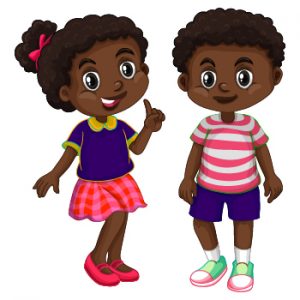
Take breaks!
One of the best ways to learn a new language is to find friends who already speak it fluently. That way, you can practice together and help each other when needed. Additionally, having friends who speak the language can help you feel more comfortable using it in everyday conversation. Here are a few tips on how to find friends who speak Khmer
A) Ask around at your school or place of work.
B) Search for Khmer speaking on Facebook or Google and then start chatting with people who seem like they might be friendly.
C) Go to Cambodian restaurants in your area, chat with the wait staff, and ask if they know any Khmer speakers you could meet up with for coffee.
D) Chat with people from Cambodia online through apps like Viber or KakaoTalk, as well as sites like HelloTalk or HelloPal! The language spoken in Cambodia is primarily Khmer. Many dialects of Khmer differ based on where someone was born, but the major dialects are Northeastern (Dâk-lieng), Central (Khorm), and Eastern (Tong krung). There is also a type of highly formalized speech called Pali; Buddhist monks often use this.
Make friends who speak that language!
If you want to learn one of the languages spoken in Cambodia, you must make friends who speak that language. This way, you can practice your speaking skills and get feedback on your pronunciation.
Additionally, making friends with native speakers will help you learn about the culture and customs associated with the language. And, of course, it’s just more fun to learn a new language with friends! What are the languages spoken in Cambodia?
Cambodian is the official language of Cambodia. However, many other regional dialects are also spoken across the country, such as Khmer dialects, including Mekong Delta Khmer, Central Khmer (the Cambodian variety of Central Thai), Northern Khmer (the Cambodian variety of Northern Thai), and Southern Khmer (the Cambodian variety of Southwestern Thai).
Get acquainted with the language scene in Cambodia – from Khmer to Cham!
In Cambodia, it seems as if there are people speaking every language under the sun – or at least in their own tongue! English and French are official languages, but Cambodians also speak Khmer (the country’s native language), Cham, Vietnamese, Chinese, Lao, and Thai. This can make it tricky to get around if you don’t know the local language… and that’s what we’re here to help with! In this article, we look at the main languages spoken in Cambodia and give some ideas on how to navigate your way through them!
Are you interested in learning Cambodian?
Cambodia is a Southeast Asian nation bordered by Thailand, Laos, and Vietnam. The official language of Cambodia is Khmer, which is spoken by about 95% of the population.
However, there are also a number of minority languages spoken in Cambodia, including Cham, Chinese and Vietnamese. English is also becoming increasingly common, especially among young people. Mekong University has partnered with Yale Language Services for translating into other languages, both for international students and locals seeking study abroad opportunities.
Yale Language Services’ linguists will work closely with you to get your message across properly when you need it translated into another language or script type.
Yale Language S also provides linguistic consultation services so that we can identify what words may not be understood based on your intended audience or market before they’re used in translations or any other communications materials.
Reasons Why You Should Learn Khmer
Cambodia is a country located in the southern portion of the Indochina peninsula in Southeast Asia. The kingdom is bordered by Thailand to the northwest, Laos to the northeast, Vietnam to the east, and the Gulf of Thailand to the southwest. Official languages spoken in Cambodia are Khmer and French.
Cham is also spoken by some ethnic minority groups. Cham is an Austroasiatic language belonging to the Mon-Khmer family. It has over one million speakers living mainly in central Vietnam. Some speakers live in Cambodia and Laos.
Cambodian Cham dialects include Western or Lower Central, Eastern or Upper Central, Southeastern or Eastern Lowland, Northern, Northeastern (or Highland), and Southern dialects. Most Cham speakers can speak more than one dialect because they have close contact with other ethnic groups in the region. There are three scripts used for writing Cham: Modern Burmese script, Mon script, and Latin script.
In recent years, there has been a rise in teaching English and Mandarin Chinese throughout many schools in Cambodia. There are two types of questions that students may be asked on the SAT when studying English: 1) objective-type questions and 2) experimental-type questions. Objective-type questions ask about facts, while experimental-type questions ask about opinions.
English conjunctions connect words or phrases to make sentences grammatically complete. They are either coordinating conjunctions, which bring two words together in a sentence; subordinating conjunctions, which introduce a dependent clause; or correlative conjunctions, which both serve to create a balance between sentences.
Studying the Khmer language is essential not only for understanding historical complexities like the Khmer Rouge era and Western Cham influences but also for deciphering linguistic intricacies such as negation particles, Polar questions, and the difference of vowel quality.
The exploration extends to academic resources like “theWayback Machine at Oxford University Press Online” and research conducted by scholars like Moravcsik, Paul, and others at Pacific Linguistics, Research School of Pacific, delving into topics such as “Austroasiatic and Mon-Khmer comparative studies” and “The Austroasiatic Central Riverine Hypothesis.” Learning Khmer becomes a gateway to unlocking the rich cultural tapestry of Treng Province in Cambodia and contributing to a broader understanding of the United Nations’ efforts in the region.
How to learn Khmer
If you want to learn Khmer, there are a few different ways you can go about it. You can take classes at a school, such as the School of Oriental and African Studies in London, or buy a self-study course.
There are also several websites that offer free resources for learning Khmer. Some of these include Polar questions (ka), noun phrases (kao), direct object phrases (e ko chhmu kaot kao knaeng) and the Mon script. It’s important to note that common speech is informal and uses vowel signs, while perfective particles help form formal sentences that use series consonants.
For example, instead of saying I speak using perfective particles would be translated as I have spoken. The negation particle is used to say no. For example, ไม่ means not or no in Khmer. The oriental series refers to languages that originated in Asia, including Mandarin Chinese, Japanese and Korean, whereas the linguistic series refers to European languages like French and Spanish.
In the study of the Khmer language at Oxford University Press, adjectival modifiers, polar questions, and negation particles play a crucial role, focusing on the linguistic nuances of Central Khmer, Western Cham, and Khmer Swadesh. Exploring the linguistic landscape of Twentieth-Century Cambodia, researchers at the Pacific Linguistics Research School of Pacific analyze the difference in vowel quality and delve into the historical impact of the Khmer Rouge. Additionally, their examination extends to Treng Province, Cambodia and hill tribes, highlighting connections with English conjunctions in Pacific Studies.
Amy Ryan embarked on a linguistic journey to learn the Khmer language, immersing herself in the study of Middle Khmer, Modern Khmer, and various Mon-Khmer languages such as Eastern Cham, Western Cham, and Central Khmer, including the unique Kiengiang Khmer dialect. As part of her learning, she delved into the nuances of Cambodian French and the linguistic intricacies of hill tribes, mastering vocabulary and perfective particles essential for expressing precise meanings in Khmer.
Within the Research School of Pacific, the School of Hawaiian and Pacific Linguistics delves into the intricacies of Khmer language learning, exploring a series of syllables and vowel quality differences through Mon-Khmer Studies. Native speaker recordings are integral to comprehending alternate verbs and contemporary writing, while the study encompasses subordinate conjunctions and the Cambodian System of Writing and Beginning. Additionally, United Nations efforts include fostering linguistic understanding, with specific attention to Khmer Khe and Khmer Krom as they relate to the richness of the Khmer language.
Useful resources
If you plan on spending time in Cambodia, it’s useful to know a bit about the country’s language scene. Cambodia’s official language is Khmer, written in the Mon script. However, there are also some minority languages spoken in the country, including Cham and modern Burmese. Buddhist monks introduced the Mon script around the 6th century AD as they tried to spread their religion throughout Southeast Asia.
Khmer particles – such as khoa, keo, kop or ko- – serve a range of functions within sentences. These particles can be used for several purposes: to emphasize, distinguish between direct and indirect speech, or to make questions or commands more polite.
In contrast to English, where vowels have an important role in determining word meaning (e.g., mama vs papa), consonants tend to dominate words in Khmer.
FAQ’S
How many languages are spoken in Cambodia?
Cambodia is a country located in Southeast Asia. It is bordered by Thailand, Laos, and Vietnam. The official language of Cambodia is Khmer, which is spoken by around 95% of the population. However, there are also a number of other languages spoken in Cambodia, including Cham, Vietnamese, Lao, Khmer Rouge, and more. According to a recent study, there are around 26 different languages spoken in Cambodia.
What are the 5 languages spoken in Cambodia?
1. Khmer is the official language of Cambodia and is spoken by the vast majority of the population.
2. Cham is a minority language spoken mainly by the Cham people, who make up around 2% of the population.
3. Vietnamese is spoken by around 1% of Cambodians, mainly in border areas and urban centers.
4. Lao is also spoken in border areas and by a small minority of Cambodians.
5. English is increasingly spoken as a second language, especially among young people and in business circles.
Do they speak French in Cambodia?
Although English is the most widely spoken language in Cambodia, Khmer is the official language. In terms of dialects, there are three main ones spoken in the country: Northern Khmer, Central Khmer, and Southern Khmer. Cham is also spoken by a minority of people living in Cambodia. As for foreign languages, The French Language is sometimes heard spoken by older generations who were educated during the time when Cambodia was under French rule. Vietnamese and Chinese are also understood by some people living near the border regions of those countries.
Are Khmer and Cambodian the same language?
Although Khmer and Cambodian are often used interchangeably, they are two different languages. Khmer is the official language of Cambodia and is spoken by the vast majority of the population. On the other hand, Cambodian is a minority language spoken mainly by members of the Cambodian diaspora. It is closely related to Khmer but shares many linguistic features with Thai.
What is Khmer Khe?
Khmer Khe, a variant of the Khmer language, exhibits unique linguistic characteristics that distinguish Khmer Khe from other forms of Khmer, making Khmer Khe an intriguing subject for linguistic exploration and Khmer Khe language enthusiasts. Embracing Khmer Khe is essential for preserving the richness of the Khmer language and ensuring its representation in a broader linguistic context.


Sorry, the comment form is closed at this time.